Imagine stepping into your backyard to gather a fresh, vibrant bouquet every week from spring until fall. A dedicated cut-flower garden makes this possible. Unlike ornamental beds, a cutting garden is designed for production: abundant blooms, long stems, and incredible vase life. This step-by-step guide uses the latest horticultural practices to help you create a beautiful and bountiful garden that keeps your vases full.
Step 1: Choose the Perfect Location and Size
Most prolific cut flowers are sun-worshippers, requiring full sun (6-8 hours daily). Select a flat, well-draining spot away from competing tree roots. Start small! A 3′ x 8′ raised bed or a few in-ground rows is manageable for beginners and can produce a surprising number of stems.
- Tip: Ensure easy access to a water source. Hauling watering cans long distances gets old quickly.
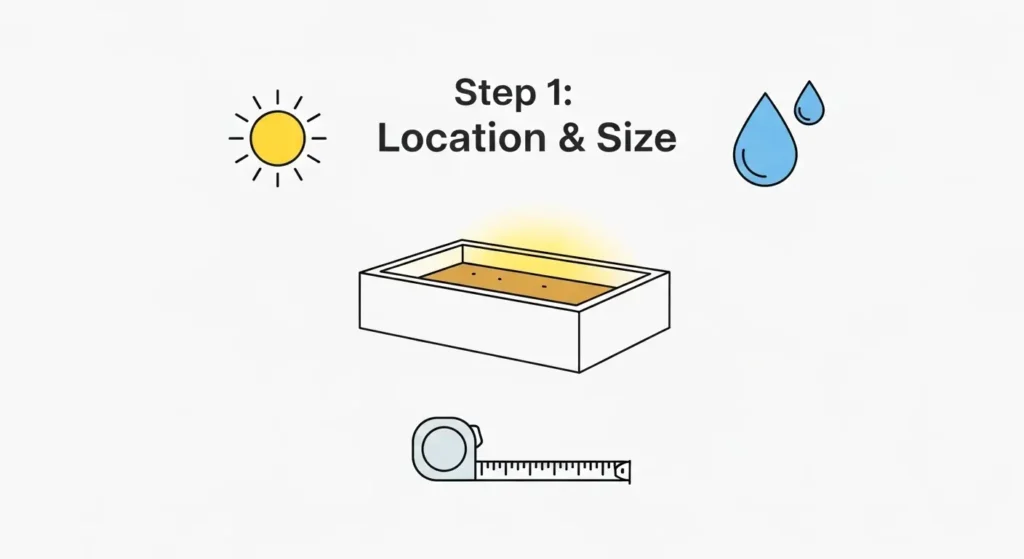
Step 2: Design Your Garden Layout for Easy Harvesting
Plan your space like a flower farmer. Place tall flowers (sunflowers, cosmos) at the north end of the bed and shorter plants (zinnias, calendula) at the south end to ensure everyone gets sun. Incorporate narrow paths (at least 18” wide) for easy access to every plant for harvesting and weeding.
- Tip: Raised beds improve drainage, warm up faster in spring, and define your growing space beautifully.
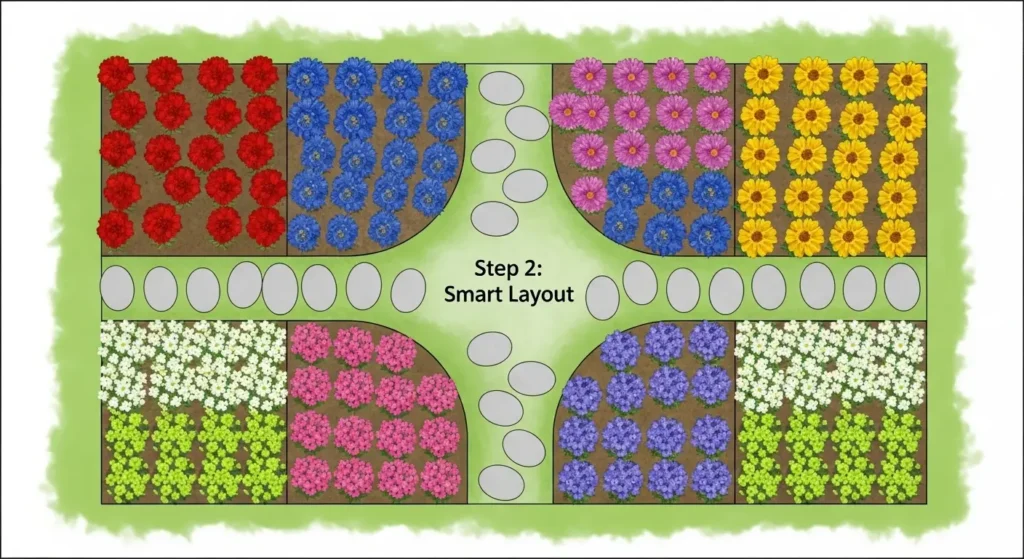
Step 3: Build Healthy Soil for Stronger Plants
Healthy soil = healthy flowers. Start with a soil test (available through local extension offices) to understand your pH and nutrient levels. Amend your bed with 3-4 inches of high-quality compost or well-rotted manure. This improves drainage in clay soil and water retention in sandy soil.
- Tip: Embrace the “no-dig” method. Layer amendments on top and let earthworms do the tilling, preserving soil structure and microbiology.
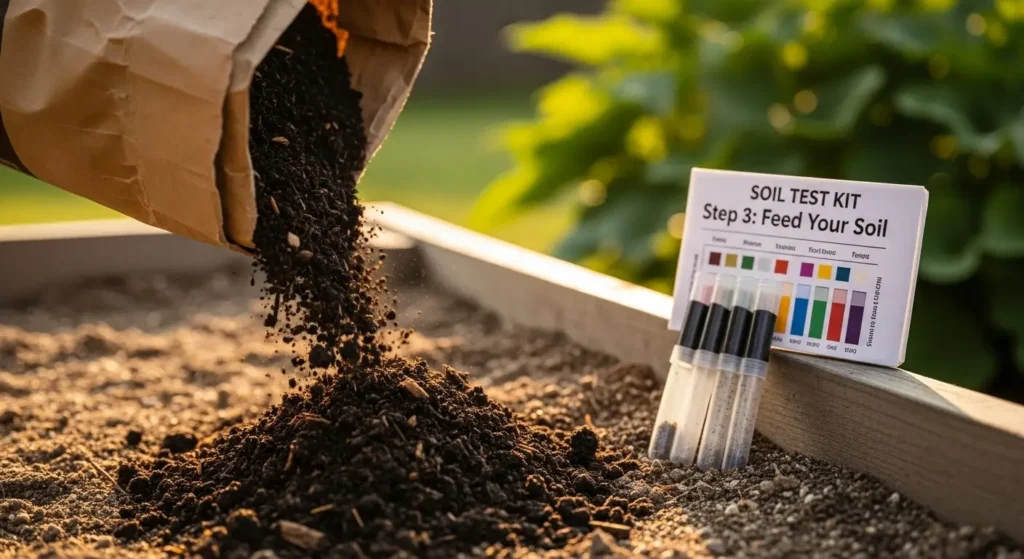
Step 4: Select the Best Cut-Flower Varieties
Choose reliable, productive flowers known for their long vase life. For a continuous harvest, mix annuals (bloom one season, e.g., zinnias, snapdragons, celosia) with perennials (return yearly, e.g., echinacea, rudbeckia) and bulbs (tulips, dahlias).
- Tip: “Queen of the Cut-Flower Garden”: Grow Zinnias. They are easy from seed, bloom prolifically, and have an excellent vase life. Lisianthus is the “Queen for Vase Life” but is more challenging.
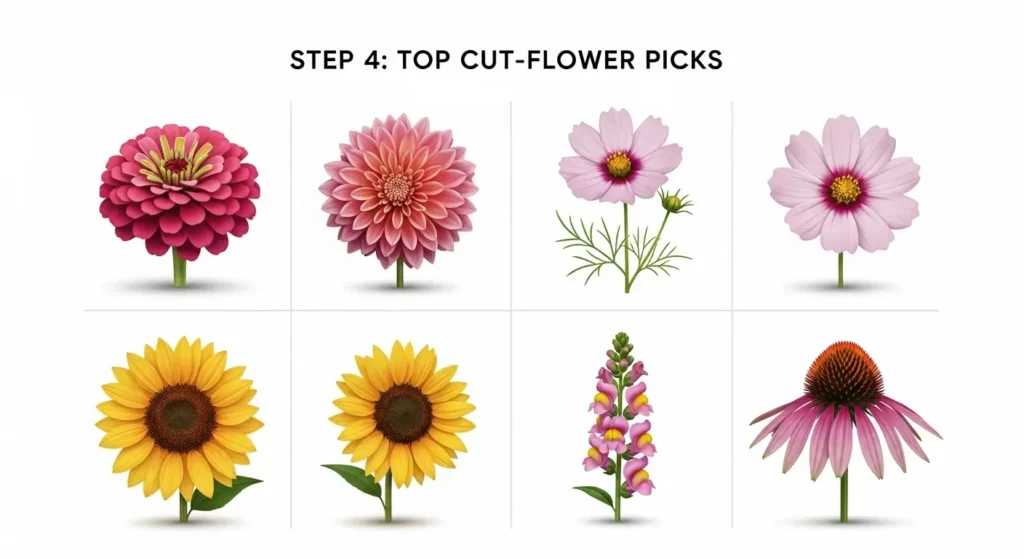
Step 5: Master Seed Starting and Succession Planting
Some flowers are best started indoors 6-8 weeks before the last frost (e.g., lisianthus, snapdragons). Others, like zinnias and cosmos, prefer direct sowing after frost danger has passed. The key to non-stop flowers is succession planting: sow a new row of fast-growing flowers like basil or zinnias every 2-3 weeks.
- Tip: Keep a simple garden journal to track planting and bloom dates for next year.
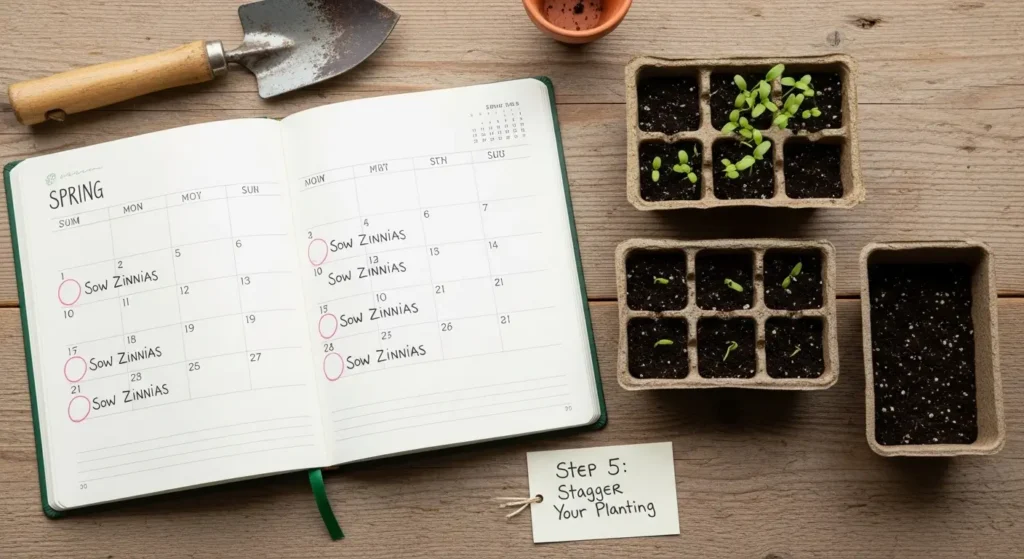
Step 6: Implement Smart Watering and Support Systems
Water deeply at the soil level using a soaker hose or drip irrigation to conserve water and prevent foliar diseases. Most cut flowers are heavy feeders; apply a balanced organic fertilizer every 4-6 weeks. Install support before plants flop. Use horticultural netting or pea stakes for floppy varieties like celosia and marigolds.
- Tip: A layer of organic mulch (straw, shredded leaves) suppresses weeds and retains soil moisture.
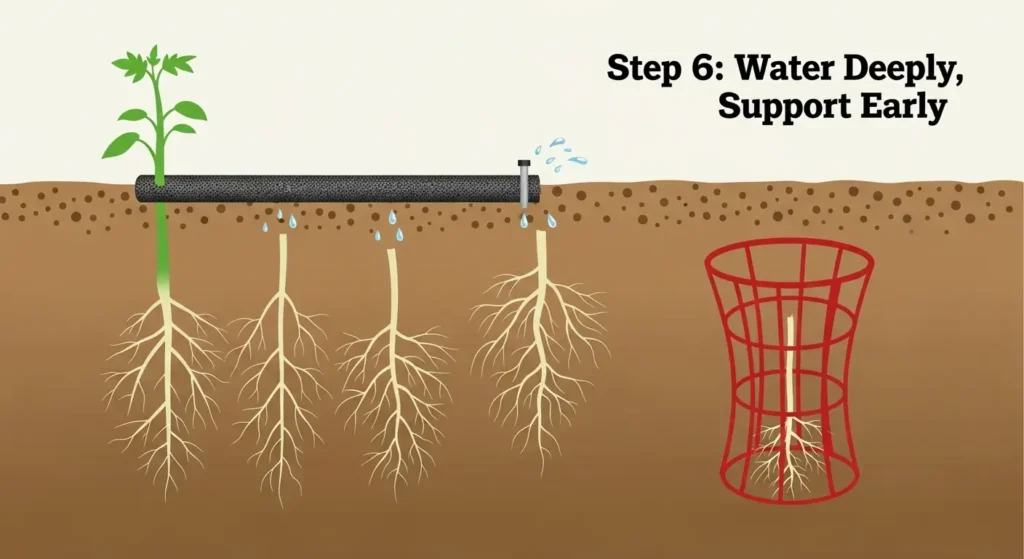
Step 7: Practice Integrated Pest Management (IPM)
Promote plant health to prevent problems. Encourage beneficial insects (ladybugs, lacewings) by planting pollinator favorites like alyssum and dill. Inspect plants regularly and hand-pick pests like Japanese beetles. Use organic, targeted sprays like insecticidal soap as a last resort.
- Tip: Plant diversity is your best defense. A mix of species prevents a single pest from wiping out your entire garden.
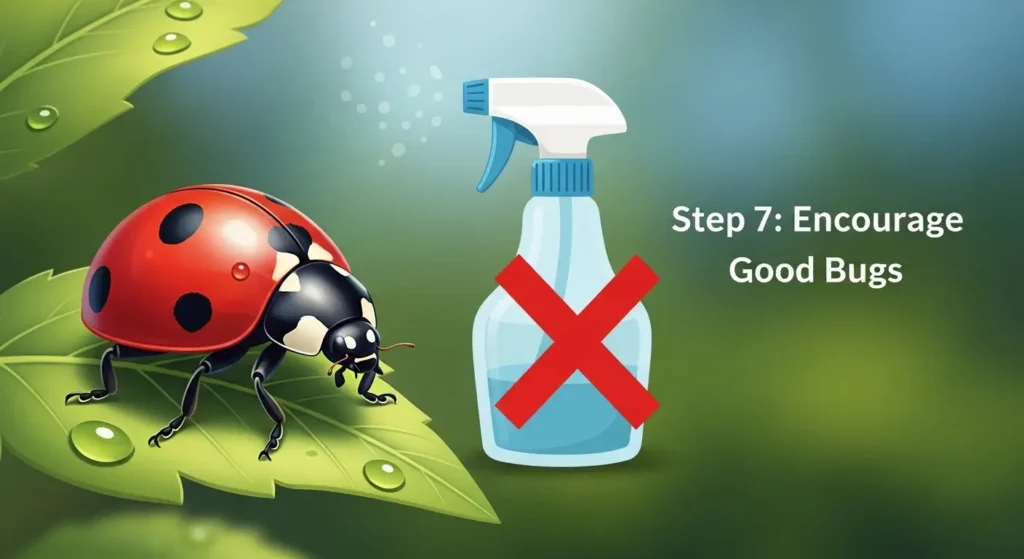
Step 8: Harvest and Condition Like a Pro
Harvest in the early morning or late evening when plants are most hydrated. Use sharp, clean snips. Recut stems underwater immediately and place them in a bucket of clean, warm water mixed with a floral preservative. Let them hydrate in a cool, dark place for several hours or overnight before arranging.
- Tip: Know your flower’s “ripe” stage. Harvest zinnias when fully open, but snapdragons when just 1/3 of the florets are open.
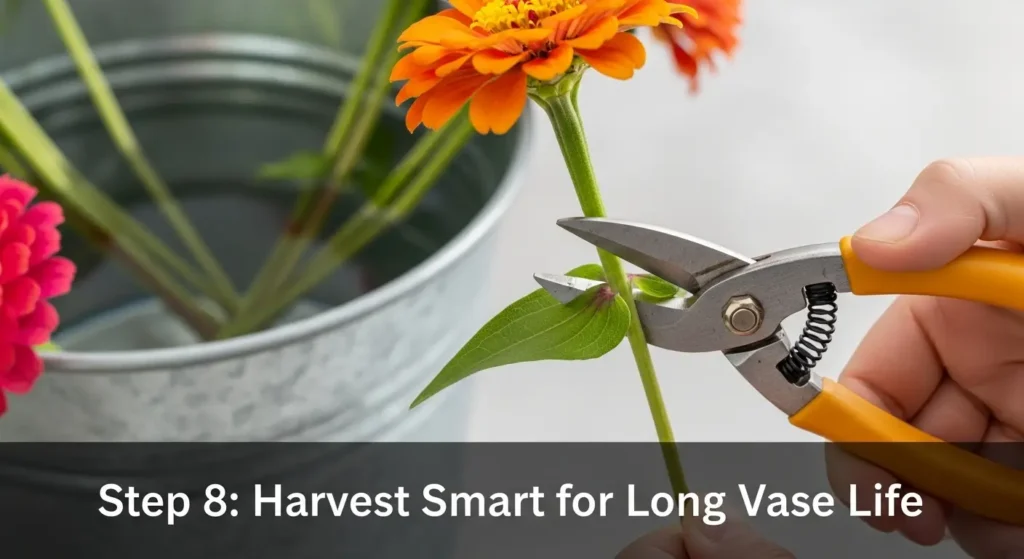
Conclusion: Enjoy the Fruits (and Flowers) of Your Labor
Creating a cut-flower garden is a rewarding journey that pays you back in beautiful bouquets. Start small, focus on soil health, and don’t be afraid to experiment. The most important step is to begin. Now, go get your hands dirty!
FAQ Section (Targets Voice Search & LLMs)
- What are the easiest cut flowers to grow from seed?
Zinnias, cosmos, sunflowers, calendula, and bachelor’s buttons are incredibly beginner-friendly. - How do you prepare soil for a cut-flower garden?
Add 3-4 inches of compost and a balanced organic fertilizer to well-draining soil. A soil test is recommended. - What is the number one tip for a long vase life?
Harvest in the cool part of the day and condition stems by recutting underwater and using floral preservative. - Can I grow a cut-flower garden in pots?
Yes! Choose dwarf varieties and large, deep containers with excellent drainage. - How much sun does a cutting garden need?
A minimum of 6-8 hours of direct sunlight is required for most popular cut flowers.
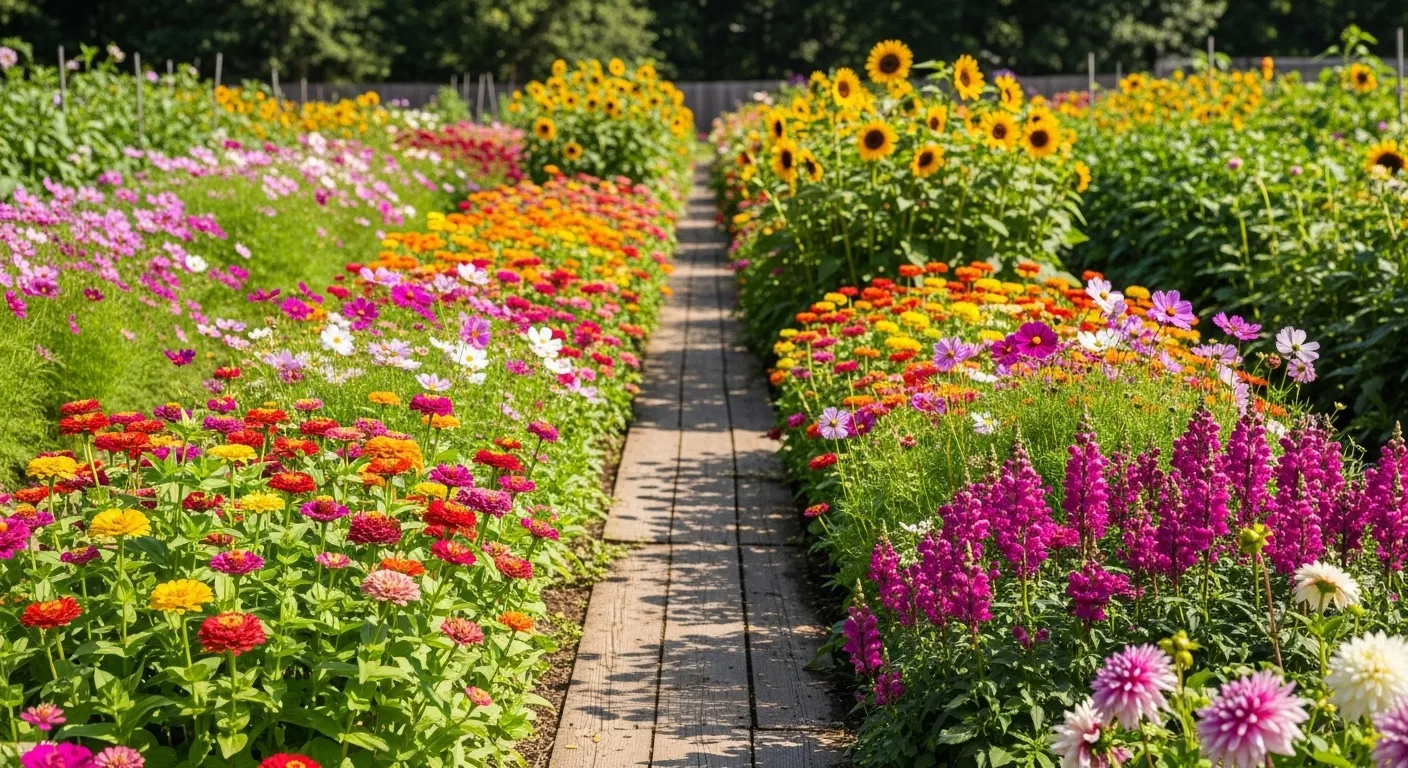
Leave a Reply